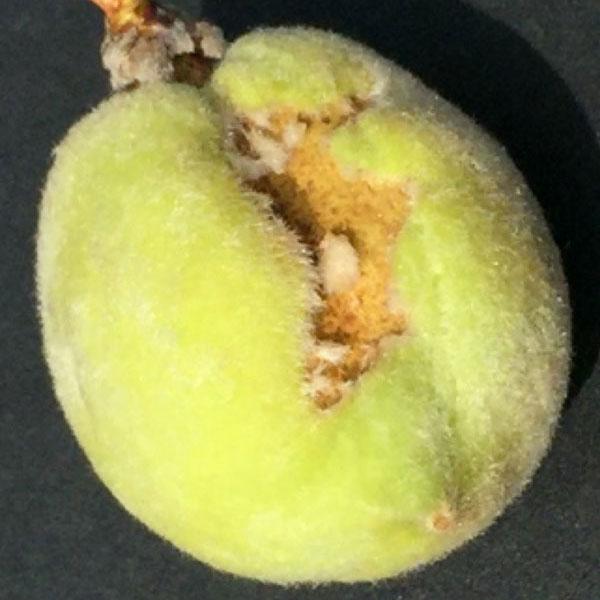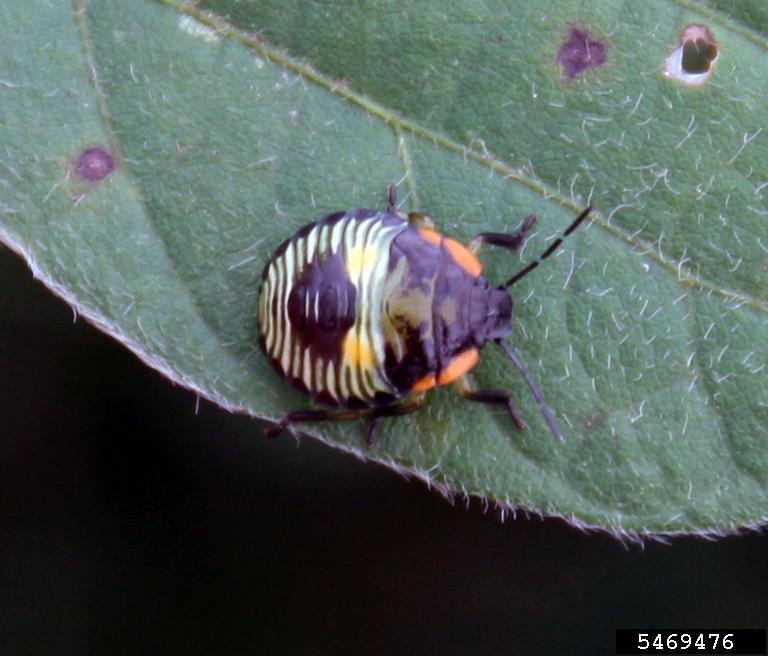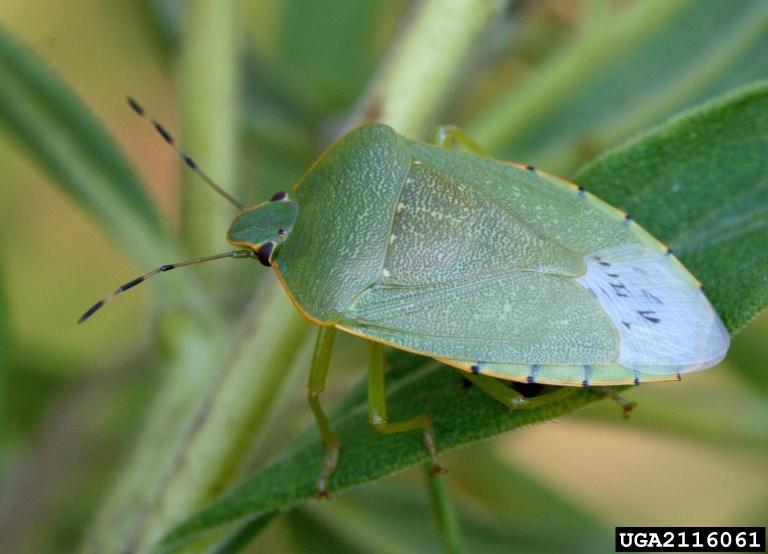Be on the Lookout for Green Stink Bug

University of Delaware extension and Rutgers both as recently reported seeing a large increase in green stinkbugs (Acrosternum hilare or Chinavia hilaris ) in their black light traps. Scout peaches and apples for adults stink bugs ( Fig 1.). They can be difficult to see so it might be useful to shake a few branches over a sheet to determine if they are present. Adult feeding during bloom and shuck split can cause the fruit to abort. As fruit grows feeding damage causes a characteristic dimpling and subsequent catfacing injury (Fig. 2). Mature fruits will have depressed lines and multiple corky areas resulting in a gnarled and mottled appearance. Several types of insets with piercing-sucking mouthparts cause catfacing injury on peaches and apples, including tarnished plant bugs and many types of stink bugs.
Scout grapes and small fruits since adult stink bugs will often lay their eggs early in the season and many small nymphs will begin to suck the juices out of the maturing fruit. Stink bug nymphs (Fig 3.) will readily hide when disturbed, therefore, careful inspection is necessary.

With only one generation per year adult green stink bugs are prevalent in June and tends to tapers off in fruit trees in July and August. Because these bugs are strong fliers, their presence may be widespread, and depending upon availability of other host plants, injury can vary considerably. There are no action thresholds based on SB monitoring. Eliminating alternate weed hosts in the orchard should reduce damage caused by this pest complex. Preventing serious catfacing injury depends largely on well-timed, early season insecticide applications. On pome fruit critical timings for the control of tarnished plant bug and most native stink bugs are pink and petal fall. On stone fruits applications at petal fall, shuck fall, and 10 days after shuck fall typically provide good control. Applications during pink are often unnecessary because most fruit injured at this time aborts. For more information about control see the Penn State Tree Fruit Production Guide (page 155).
This article appears in the June 2022, Volume 13, Issue 3 of the Vegetable and Fruit News
